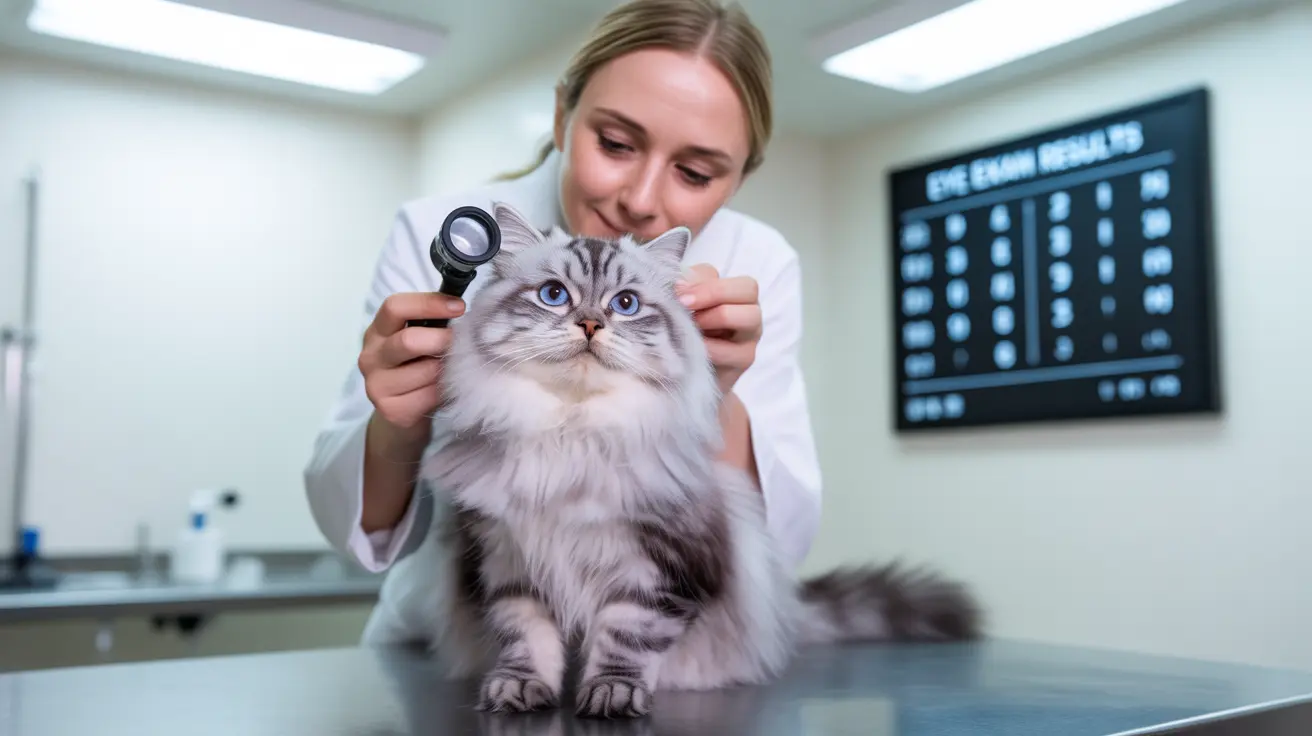What is Iris Atrophy in Cats?
Iris atrophy occurs when the colored portion of the eye begins to thin or degenerate. This condition can be classified into two main types: primary (age-related) and secondary (disease-related). Primary iris atrophy typically develops as cats age and is generally considered a benign condition. Secondary iris atrophy, however, results from other eye conditions and requires prompt medical attention.
Signs and Symptoms to Watch For
The most noticeable signs of iris atrophy include:
- Irregular pupil shape (dyscoria)
- Different-sized pupils (anisocoria)
- Incomplete pupil response to light
- Scalloped or moth-eaten appearance of the iris
- Increased sensitivity to bright light
- Small holes or thin areas in the iris
Common Causes of Iris Atrophy
Primary Causes
Age-related degeneration is the most common cause of primary iris atrophy. This natural process typically occurs in senior cats and progresses slowly over time.
Secondary Causes
Secondary iris atrophy can result from several conditions:
- Chronic inflammation (uveitis)
- Glaucoma
- Eye trauma
- Infections (FIV, FeLV, FIP)
- High blood pressure
- Tumors
Diagnosis and Veterinary Assessment
Veterinarians diagnose iris atrophy through:
- Comprehensive eye examination
- Pupillary light response testing
- Pressure testing (tonometry)
- Blood work to check for underlying conditions
- Detailed examination of the iris structure
Treatment Approaches
Treatment varies depending on the cause:
Primary Iris Atrophy
- Usually requires no specific treatment
- Management of light sensitivity
- Regular monitoring
Secondary Iris Atrophy
- Treatment of underlying conditions
- Anti-inflammatory medications when needed
- Pressure-reducing medications for glaucoma
- Regular follow-up care
When to Seek Veterinary Care
Contact your veterinarian immediately if you notice:
- Sudden changes in pupil size or shape
- Signs of eye pain or discomfort
- Redness or inflammation
- Cloudy appearance in the eye
- Any discharge
- Changes in vision or behavior
Frequently Asked Questions
What are the common signs of iris atrophy in cats and how can I recognize them?
Common signs include irregular pupil shapes, different-sized pupils, decreased pupil response to light, and a moth-eaten appearance of the iris edges. You might also notice your cat becoming more sensitive to bright light.
What causes iris atrophy in cats and is it always related to aging?
While aging is a common cause (primary iris atrophy), the condition can also result from underlying eye diseases like glaucoma, uveitis, or trauma (secondary iris atrophy). Not all cases are age-related.
How is iris atrophy in cats diagnosed by a veterinarian?
Veterinarians diagnose iris atrophy through a complete eye examination, including pupillary light response testing, pressure measurements, and possibly blood work to check for underlying conditions.
Can iris atrophy in cats affect their vision or cause eye pain?
Primary (age-related) iris atrophy typically doesn't affect vision or cause pain. However, secondary iris atrophy from conditions like glaucoma or uveitis can impact vision and be painful if left untreated.
What treatments are available for iris atrophy in cats, especially when it is caused by underlying diseases?
Treatment depends on the cause. Primary iris atrophy usually needs no treatment beyond monitoring. Secondary iris atrophy requires treating the underlying condition, which may include anti-inflammatory medications, pressure-reducing eye drops, or other specific treatments based on the cause.






